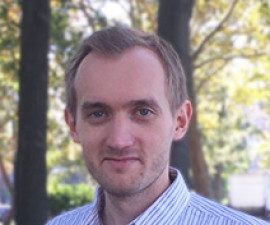

Research Bio
The Denis Titov lab uses computational and experimental approaches to work on the following long-term research directions:
Quantitative Understanding of Human Metabolic Pathway Regulation
The goal of this research direction is to achieve a predictive understanding of human metabolism regulation. Decades of biochemical and physiological studies of purified enzymes have yielded extensive knowledge of metabolic enzyme regulation by small molecules and posttranslational modifications. The group is using this wealth of information to quantitatively understand how the control of individual enzymes by known and unknown regulators allows human cells to maintain homeostasis and how it breaks down in disease. Their ultimate goal is to accurately predict human metabolism in any cell type, under any condition, and in response to any perturbation.
Deciphering the Molecular Basis of Aging
The goal of this research direction is to understand the molecular mechanisms of aging using model organisms. Decades of aging research identified several environmental conditions (e.g., caloric restriction, temperature), genetic mutants (e.g., daf-2, UPR-MT), and small molecules (e.g., rapamycin) that robustly extend the lifespan of evolutionarily diverse model organisms. They are using a powerful model organism nematode C. elegans to identify the evolutionarily conserved biochemical processes that control lifespan downstream of these classical interventions, which will allow them to rationally design interventions to extend human lifespan.
Research Expertise and Interest
metabolism, aging, systems biology, computational biology
